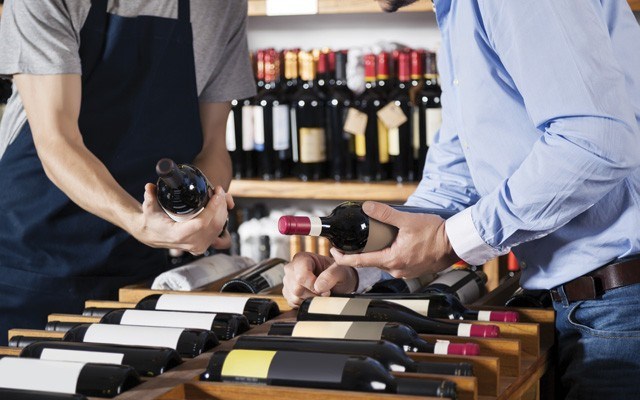There's a lot of talk in the wine business about how consumers relate to wine but perhaps Fats Waller said it best when he penned the song "Ain't Misbehavin'" and the lines: "Find out what they like, and how they like it, and let him have it just that way. Give them what they want, and when they want it, without a single word to say."
In late 2016, the Survey of American Wine Consumer Preferences gave us a snapshot of what consumers want to drink and some of the reasoning behind their choices. Sonoma State University surveyed 1,081 wine consumers from 50 states including 58 per cent women and 42 per cent men spanning Millennials, Gen Xers, Baby Boomers and, for the first time, the "Greatest" generation, aged 70-plus. The median annual income was $50,000 to $69,999, but 25 per cent made more than $100,000 per year. Among the sample, 48 per cent were considered high-frequency drinkers who consume wine daily or several times a week while the rest of the imbibers, 52 per cent of them, are occasional drinkers.
The top five varietal wines were not much of a surprise: chardonnay, cabernet sauvignon, merlot, pinot noir and pinot grigio.
What was new in 2016 was the question, how do you prefer your wine to taste? You could select all the "tastes" that applied, and interestingly, semi-sweet replaced fruity as the most preferred style. In some way that choice was at odds with an increased preference for dry-wine styles compared to 2015 respondents.
The report also cited that "enjoying the taste of wine remained the number one reason why Americans like to drink wine, at 80 per cent of the sample. Relaxation (at 61 per cent) and pairing with food (55 per cent) were the second and third reasons." Sadly, and similar to 2014 and 2015, only 7, 4 and 2 per cent of the sample indicated that they looked for organic, sustainable, and biodynamic wines, respectively, as part of their wine purchase decision making. Finally, price and brand ruled purchasing at 80 and 67 per cent, respectively, and variety took precedence over region/appellation.
Based on this year's survey, American wine consumers appear to be evolving in their preferences when compared to research conducted a decade ago. Back then, more Americans preferred white wine to red, and screw caps had a low acceptance rate. Today, wine in America is not only consumed with meals, but used to relax with friends and family, or to enjoy as a delicious drink on its own. The latter sentiment may explain why semi-sweet wines are gaining ground in the market because you can enjoy them with or without food.
The British Columbia market looks a lot like this survey except, as always, we pay more for less as part of our penance for living in this beautiful province. Today, in the spirit of giving them what they want, I went searching for five varietal wines you can buy that reflect the survey findings.
Up first is the Concha y Toro Marqués de Casa Concha Chardonnay, Limari Valley, Chile $19.99. Winemaker Marcelo Papa is tweaking the "Marques" range, slowly taking it out of the predictable, super-ripe, heavily extracted, too-much-new-oak-style to a juicy, fresh, more "naked" style that better represents the grape and the land. The vineyard is in the Limarí Valley just 19 kilometers from the Pacific Ocean. Rich yet elegant, the vibrant pear fruit reflects picking dates that are as much as three weeks ahead of historical dates. Food-friendly, it is easily one of the best $20 chardonnays in the world.
The Louis M. Martini Cabernet Sauvignon, Sonoma County, California $17.99 has a classic savoury Sonoma nose with dusky red berries, plum, cocoa, fine toasty spice and mocha-supple tannins. Fire up the barbecue and grill one of your favourite meat cuts. Solid value.
Our merlot pick is the Bartier Bros. Merlot, Okanagan Valley, British Columbia $21.99. Winemaker Michael Bartier wild-ferments his wines and they are unfined and unfiltered. It is a very pure winemaking style. The attack is both silky and stony with a dried herb, South Okanagan nose and a lovely reserved cherry fruit and oak character that melt together. A bit more terroir-based than the survey but one can always hope we will get there. A superb wine for a T-bone steak.
Next up is Mud House Central Otago Pinot Noir 2015, Central Otago, New Zealand $17.49. An annual favourite for me, there's something delicious about this entry-level Central Otago pinot noir from Mud House. The fruit is grown at Bendigo and destemmed, leaving a portion of whole berries to brighten the palate. Look for plums and dark cherries flecked with savoury, spicy, dried herbs that finish round and supple with very little oak. A soft, silky red ready for a stuffed bird. Super value.
Our pinot grigio, or in this case pinot gris, pick is the Hillside Un-oaked Pinot Gris 2016 Okanagan Valley, British Columbia $20.00. Hillside has made the long journey to terroir-based wines grown only on the Naramata Bench and this one comes from around the village. Fresh and juicy, with slivers of orange that accentuate the citrus washed orchard fruit, it has just a hint of colour a la Provençal so that it looks like a pinot gris rosé, a category I'm sure BCers could get behind. Think grilled chicken, mussels, clams, cracked crab. Drink all summer or while it lasts.
Anthony Gismondi is a globetrotting wine writer who makes his home in West Vancouver, British Columbia. For more of his thoughts on wine go to www.gismondionwine.com.




